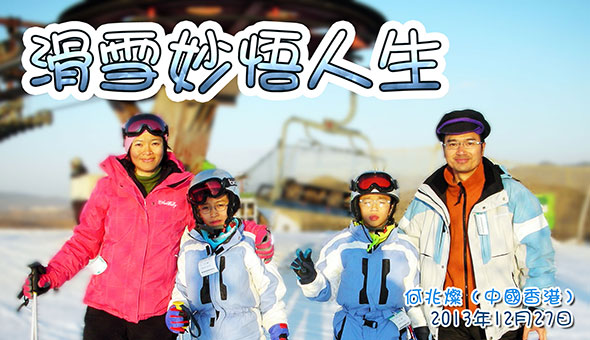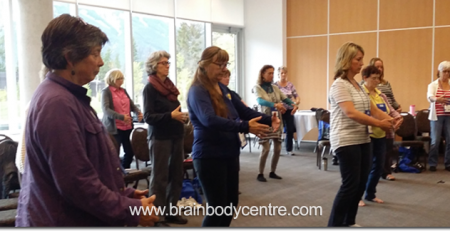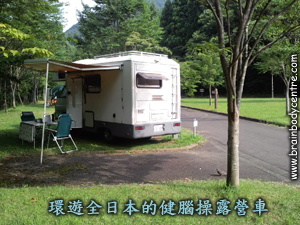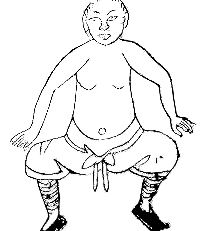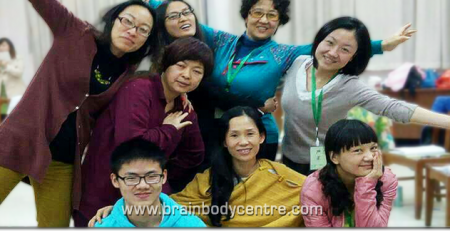Wonderful Insight into Life in Skiing
Conrad Ho
27 December 2013, HK, China
I skied for the first time in February 1992 on Seoraksan Mountains in South Korea. I skied slowly for several times on a gentle slope for beginners which was very short and flat. All were going well until I got a bit adventurous and sped up by pushing a few times with the ski poles. Consequently, I skidded off the trail and got my legs locked into a pile of virgin snow one meter high. Stucked, I had to be rescued. Although my body was not injured, my pride was hurt. It was so scary to be in a state of uncontrollable continuous sliding.
I skied for the second time in December 2006 in a small ski resort in Beijing for beginners. There were two ski trails, both very short, about 40 meters long. I had some experience in ice-skating but was not good at it. I could skate around slowly. While skiing seemed to be similar to ice-skating, they were very different. The greatest difference was that ice-skating was done on a flat surface. As long as one stopped moving, one would slow down naturally until it came to a complete halt eventually. Skiing was done on a slope. It would go faster and faster, and one has to do something to slow down and stop. I played for about 5 hours on that day. While I felt great, I dared not challenge the higher of the two trails. I was still haunted by the feeling of not being able to control myself and crashing into snow piles.
In December 2008, I skied for the third time in a ski resort in the suburb of Dalian in northern China. There were two ski trails. The trail for beginners was about 300 metres long. One had to stand on a conveyor belt to go up a slope of more than 10 meters high to ski down. The trail for the experienced was about 800 meters long. One had to take a chair lift to reach a small hill top of more than 150 metres to ski to a lower hill, make a turn, ski straight down a steep slope to the starting point of the beginner trail, and then back to the chair lift station. This time, I skied at the beginner trail for two days and decided to hire a professional coach. I received training in the two mornings and then practised on my own in the afternoons. I took off the gears during lunch-time to rest in the room and had hot spring bath in the evenings. It was very enjoyable and I fell in love with skiing.
Since then, I visited Beijing’s best ski resort in 2009 and 2010, Jilin Asian Games ski resort in 2011 and Hokkaido’s biggest ski resort in 2013. I got better every year: for ski trail, I progressed from the beginner’s level to the intermediate; for skiing method, I changed from skiing straight downhill slowly with skis in a A-shape to sliding down in zigzags with parallel skis. What was more, I would always soak in a hot spring after skiing to relieve fatigue. Awesome!
However, what has been fascinating me about skiing is not just the bodily pleasures described above, but it also gives me spiritual satisfaction – skiing facilitates me to gain insights in life.
The first insight has been to do according to the flow. For skiers on the slope, there is only one way which is enjoyable and pleasant – going down. Walking up in skis is exhausting and so is taking off the skis to walk up with the gears. It makes no sense to walk sideways and is impossible to ski sideways. Skiing down would be much more fun, in straight line or zig-zags, following the pull of gravity (the flow).
As in life, there are major trends. According to the Chinese old saying: “those adhere, prosper; those resist, perish”. People in this world get too used to the environment of the Earth and believe that the ground is unswervingly stable, until an earthquake strikes. In fact, this is just an illusion. The fact is you are circling continuously in a speed of 1,670 kilometers per hour if you stand on the Equator, as a result of Earth’s rotation. Because of Earth’s revolution, you are going through space in a speed of 108,000 kilometers per hour. We are on a “space ship” called Earth, which is moving in high speed and is absolutely not fixed in a certain spot. The day and night cycles brought about by Earth’s rotation, and the four seasons and other Nature’s rhythms brought about by revolution are major trends. It is better for us to be guided by our biological clock, and live our lives in a rhythm compatible to the flows of these trends.
The second one is to do by not doing, i.e. to make the least or even zero effort in doing things. Expert skiers would not make too many and big movements to control speed and direction while on the slope. That would waste too much energy and make it more difficult to balance. Moreover, they would not move the left and right sides of their body and limbs separately. That would prevent falling and avoid injury. So, skiers control downhill speed and direction by adjusting the amount of friction on different spots at the bottom of the skis. This is done by shifting (1) the body to change the relative position of the body’s centre of gravity to the skis; (2) leg positions in a coordinated manner to change the angles between the skis and the direction of the slope as well as the angles between the bottoms of the skis and the surface of the slope.
In the real world, people seek to use the least resources to do the most, maximizing the efficiency? This is why in management studies, there is the so-called active and passive management. Within the scope of what we can do, we would manage actively to ensure results meet requirements. But when it is beyond our control, we would manage passively, making use of external forces to move us closer to the desired outcome.
The third is to do according to reason. How would you naturally stand if you are on a slope facing out? Leaning backwards. This is why beginners would lean backwards instinctively, especially while accelerating, believing that they could be more balanced. But on the contrary, it would make the skis tilt up slightly, reducing friction and thus would increase the speed of sliding down. The foremost principle of skiing is to lean one’s body forward, making use of the body weight to put pressure on the front half of the skis to control direction and speed. It is difficult for many people to lean forward while skiing straight down. Moreover, when one makes a turn while walking, the body leans to the direction of turning. But on a ski trail, turning is achieved by first leaning one’s body slightly to the opposite of the direction of turning, increasing the friction of the outer ski.
When you do things in real life, have you been in a situation that you know the reasonable action plan but you do not dare, want or like to do things like that, and therefore have not done well? You would blame yourself and even regret miserably afterward. It must be stressed that being reasonable does not mean to be rational at all time! One is rational when it should be sensical; one is passionate when it should be sensible. It is reasonable to have such flexibility.
To do things according to the flows, by not doing and according to reason are challenging acts to achieve. If the reader would like to achieve them, too, pondering over them while skiing should be able to help.

